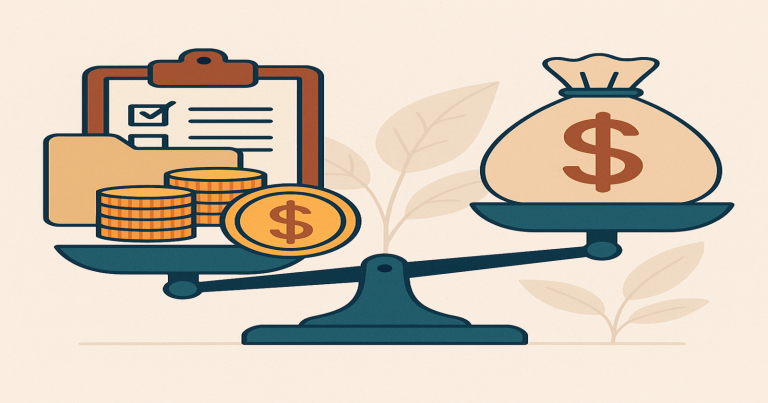Current liabilities are the debts or financial obligations that a company must pay within one year. These are the short-term payments the company owes to others like vendors, banks, or employees. You will see them listed on the balance sheet under the liabilities section. They include items like accounts payable, salaries payable, tax payable, short-term loans, and more. For a business to be strong and have a good reputation, current liabilities must be managed well. On-time payments guarantee the security and reliability of the company. Delaying these payments, however, can result in cash flow problems and put small businesses and startups at serious risk of going out of business.
What Is Current Liabilities?
Every company, regardless of its size or industry, deals with borrowing, buying goods on credit, or owing money. These small debts, when they must be paid within one year, are termed as current liabilities.
Current liabilities are the company’s short-term dues. These are amounts the business must pay within 12 months of its regular operating cycle. They are the company’s financial promises to others.
For example:
- If you buy goods from a supplier and agree to pay in 30 days, it becomes a current liability.
- If you take a bank loan that you must repay in 6 months, it becomes a current liability.
- If you owe salary to your employees for this month, that too is a current liability.
These liabilities affect the company’s liquidity. Cash flow indicates company liquidity, marking how quickly it can pay its bills. When the current liabilities become greater than cash or current assets, the business finds itself alive in theory.
In accounting, liabilities are always the amounts you owe. You must pay these either in cash, goods, or services. The key point is that current liabilities are short-term, and they appear on the balance sheet.
Here’s a simple format showing how current liabilities look:
| Current Liabilities | Amount (₹) |
| Accounts Payable | 50,000 |
| Salaries Payable | 20,000 |
| GST / Tax Payable | 10,000 |
| Short-Term Bank Loan | 1,00,000 |
| Interest Payable | 5,000 |
| Total Current Liabilities | 1,85,000 |
Every accountant must know how to find, record, and manage these numbers correctly.

Types of Current Liabilities in Accounting
What are these contemporary obligations? They possess dimensions of purposes and roots; thus, they assume various forms. Therefore, knowing all those kinds of liabilities is crucial when preparing the accounts.
1. Accounts Payable (AP)
This is the most common type. When a company buys goods or services on credit and agrees to pay later, it becomes accounts payable. This can be payment to suppliers, vendors, or service providers.
2. Salaries and Wages Payable
When a company delays salary payments at the end of the month, the unpaid amount becomes a liability. If it is due soon, it goes under current liabilities.
3. Interest Payable
If the company takes a loan, it pays interest regularly. Any unpaid interest that is due within one year is recorded here.
4. Tax Payable / GST Payable
The company must pay taxes to the government. This includes income tax, GST, TDS, and other taxes. If not paid immediately, these become current liabilities.
5. Short-Term Loans
These are loans the company must repay within 12 months. It may be from a bank, NBFC, or a private party.
6. Dividends Payable
If the company declares dividends but has not yet paid them, they go under current liabilities.
7. Customer Advances / Unearned Revenue
If a customer pays in advance for a product or service not yet delivered, the amount is a liability until the company fulfils the promise.
Each of these items plays a big role in tracking the company’s financial obligations. You must report them correctly for fair accounting.
Why Are Current Liabilities Important in Accounting?
Knowing what its current liabilities are is not enough. You must also understand why they matter. These liabilities help measure the financial health of a business.
Helps Check Liquidity
Liquidity, in simple terms, is the company’s ability to pay off its debts quickly. If the current liabilities exceed the current assets, it’s a sign that the company might not have enough cash to cover its debts, which can be a serious threat to its survival.
Used in Ratios
Many financial ratios use current liabilities to assess the company’s performance. These include:
- Current Ratio = Current Assets / Current Liabilities
(If this Ratio is less than 1, it shows weak liquidity)
- Quick Ratio = (Current Assets – Inventory) / Current Liabilities
(This Ratio is stricter and ignores inventory)
These ratios help investors and lenders decide if they can trust the company.
Tracks Financial Discipline
If a company regularly delays payments to vendors, employees, or banks, it shows poor financial discipline. High current liabilities and low payments mean the company may default or shut down.
For small businesses, managing current liabilities well means good relationships with suppliers, banks, and workers. It builds trust and helps growth.
Examples of Current Liabilities in Real Life
You now understand the meaning and types. Let’s take real-life examples to make it clearer.
Small Business Example:
You run a bakery in Delhi.
- You buy flour and sugar from a supplier and agree to pay ₹30,000 in 15 days → Accounts Payable
- You pay your 5 workers on the 7th of each month → Salaries Payable
- You owe ₹4,000 in GST for last month’s sales → Tax Payable
- You took a loan of ₹50,000 from a bank for new equipment and must repay in 6 months → Short-Term Loan
These 4 items form your current liabilities. You must manage them to keep your bakery running smoothly.
Medium Business Example:
A garment company receives ₹1,00,000 in advance for a large T-shirt order. This amount is unearned revenue until the order is delivered. If not fulfilled in the same year, it stays under current liabilities.
These real-life examples demonstrate how accounting concepts can be directly applied to daily business operations, making the relevance of these concepts clear to the reader.
How to Record Current Liabilities in Books?
Recording current liabilities correctly is very important. In accounting, you follow the double-entry system. That means every liability must be matched with an opposite account entry.
Journal Entry Format:
When a company receives goods on credit:
| Purchase A/C Dr To Accounts Payable A/C |
When salary is due at month-end:
| Salary A/C Dr To Salary Payable A/C |
When you repay a part of a loan:
| Loan A/C Dr To Bank A/C |
You enter these values in the liability section of the balance sheet until you pay them. After payment, the liability ends, and the entry moves to cash or bank.
Accounting software like Tally, Zoho Books, or QuickBooks also records this automatically. But you must feed correct information.
Difference Between Current Liabilities and Non-Current Liabilities
Current liabilities are short-term obligations due within one year, like creditors or taxes payable. Non-current liabilities are long-term debts payable after one year, such as debentures or term loans. Current liabilities affect liquidity, while non-current ones impact long-term solvency. Both appear under separate sections in the balance sheet.
| Basis | Current Liabilities | Non-Current Liabilities |
| Duration | Payable within 12 months | Payable after 12 months |
| Examples | GST Payable, AP, Salary | Long-Term Loans, Bonds Payable |
| Place in Balance Sheet | Upper section | Below current liabilities |
| Liquidity Impact | Affects short-term finance | Impacts long-term solvency |
How to Reduce and Manage Current Liabilities?
If current liabilities rise too much, the company may run out of cash. So, it’s important to manage them.
- Pay vendors on time to reduce accounts payable.
- Set reminders for tax and loan dues.
- Avoid too many short-term loans.
- Use budgeting tools to track expenses.
- Negotiate better payment terms with suppliers.
Companies that manage liabilities will enjoy smooth cash flow and steady business operations.
Current Liabilities FAQs
1. What are current liabilities in one line?
These are short-term debts a business must pay within one year.
2. Where do you show current liabilities?
They are listed under the liabilities section of a balance sheet.
3. What are 3 examples of current liabilities?
Accounts payable, salaries payable, and short-term loans.
4. Can a business function without current liabilities?
No. Almost every business uses short-term credit for smooth operations.
5. Are current liabilities bad for business?
No. They are normal, but you must manage them carefully to avoid problems.


